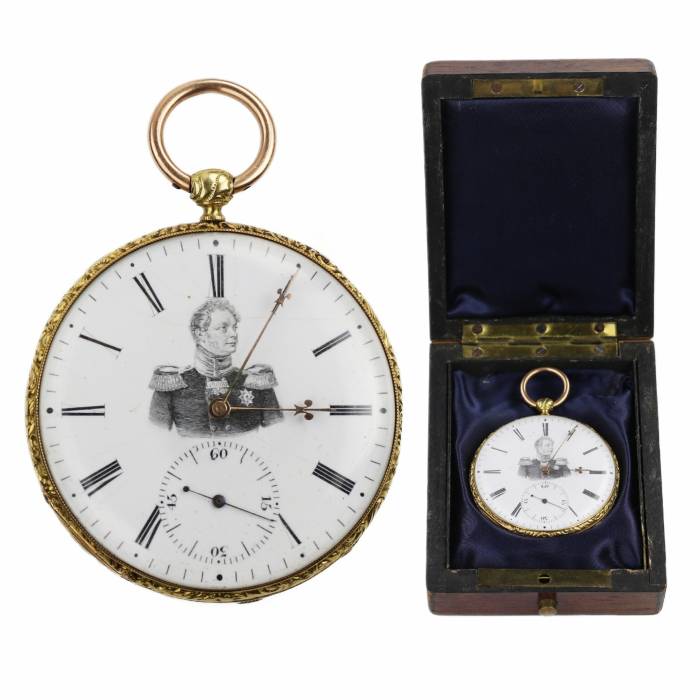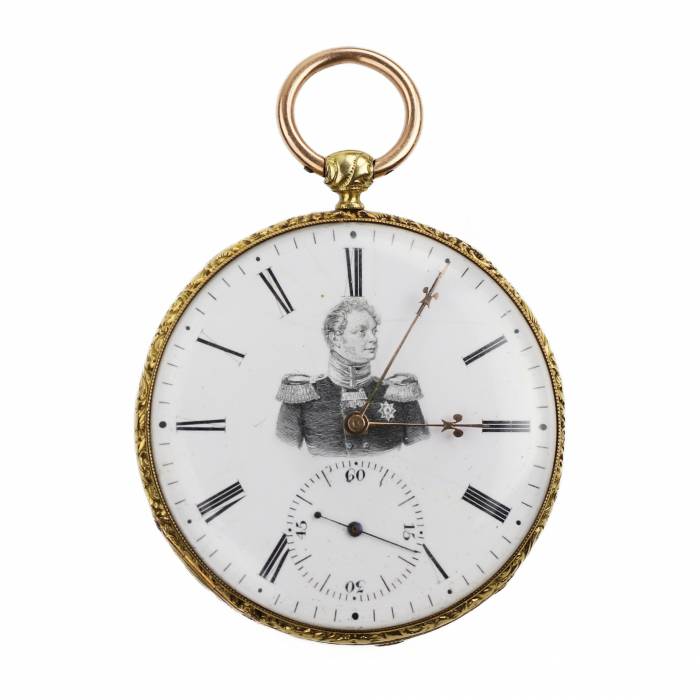
AntiqonART consultant will contact you within one business day after receiving your request.
Thank you for your request!
Our consultant will contact you soon.

AntiqonART consultant will contact you within one business day after receiving your request.



























Movement signed:B. Courvoisier à Tunsberg et huit trous en rubis, Chaux-de-Fonds, No. 14878.
The watch is accompanied by its original Russian corsage chain in 56 gold standard (18K), marked with imperial Russian assay stamps, as confirmed by macro photography. Also included is the original lacquered case with dark blue velvet lining and a key with hand-crafted handle.
Marks:
– Case: Swiss 585 standard (14K), hallmark
– Chain: Partially legible marks — master’s mark “NS”, St. Petersburg city arms, Russian 56 standard (18K), marks on clasp and links
Dimensions and weight:– Watch: diameter 46 mm, weight 53.51 g– Chain: length 154 cm, weight 38.45 g
Condition:Excellent. All elements — case, movement, enamel miniature, chain and case — are in authentic museum-level condition.
Provenance:Auction Christie’s, Rome, Palazzo Massimo Lancellotti branch.

















